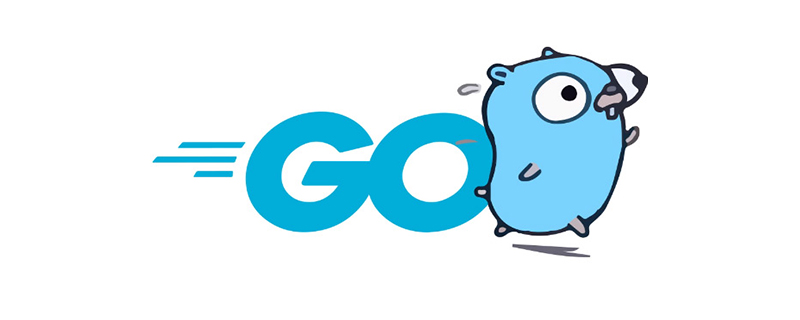Go语言中处理json数据的方法
前端 / 管理员 发布于 7年前 203

Go json包
Marshal():Go数据对象 -> json数据
UnMarshal():Json数据 -> Go数据对象
func Marshal(v interface{}) ([]byte, error)func Unmarshal(data []byte, v interface{}) error构建json数据
Marshal()和MarshalIndent()函数可以将数据封装成json数据。
1、struct、slice、array、map都可以转换成json
2、struct转换成json的时候,只有字段首字母大写的才会被转换
3、map转换的时候,key必须为string
4、封装的时候,如果是指针,会追踪指针指向的对象进行封装
例如:
有一个struct结构:
type Post struct { Id int Content string Author string}这个结构表示博客文章类型,有文章ID,文章内容,文章的提交作者。这没什么可说的,唯一需要指明的是:它是一个struct,struct可以封装(编码)成JSON数据。
要将这段struct数据转换成json,只需使用Marshal()即可。如下:
post := &Post{1, "Hello World", "userA"}b, err := json.Marshal(post)if err != nil { fmt.Println(nil)}Marshal()返回的是一个[]byte类型,现在变量b就已经存储了一段[]byte类型的json数据,可以输出它:
fmt.Println(string(b))
结果:
{"Id":1,"Content":"Hello World","Author":"userA"}可以在封装成json的时候进行"美化",使用MarshalIndent()即可自动添加前缀(前缀字符串一般设置为空)和缩进:
c,err := json.MarshalIndent(post,"","\t")if err != nil { fmt.Println(nil)}fmt.Println(string(c))结果:
{ "Id": 1, "Content": "Hello World", "Author": "userA"}除了struct,array、slice、map结构都能解析成json,但是map解析成json的时候,key必须只能是string,这是json语法要求的。
例如:
// slice -> jsons := []string{"a", "b", "c"}d, _ := json.MarshalIndent(s, "", "\t")fmt.Println(string(d))// map -> jsonm := map[string]string{ "a":"aa", "b":"bb", "c":"cc",}e,_ := json.MarshalIndent(m,"","\t")fmt.Println(string(e))返回结果:
[ "a", "b", "c"]{ "a": "aa", "b": "bb", "c": "cc"}使用struct tag辅助构建json
struct能被转换的字段都是首字母大写的字段,但如果想要在json中使用小写字母开头的key,可以使用struct的tag来辅助反射。
例如,Post结构增加一个首字母小写的字段createAt。
type Post struct { Id int `json:"ID"` Content string `json:"content"` Author string `json:"author"` Label []string `json:"label"`}postp := &Post{ 2, "Hello World", "userB", []string{"linux", "shell"}, }p, _ := json.MarshalIndent(postp, "", "\t")fmt.Println(string(p))结果:
{ "ID": 2, "content": "Hello World", "author": "userB", "label": [ "linux", "shell" ]}使用struct tag的时候,几个注意点:
1、tag中标识的名称将称为json数据中key的值
2、tag可以设置为`json:"-"`来表示本字段不转换为json数据,即使这个字段名首字母大写
如果想要json key的名称为字符"-",则可以特殊处理`json:"-,"`,也就是加上一个逗号
3、如果tag中带有,omitempty选项,那么如果这个字段的值为0值,即false、0、""、nil等,这个字段将不会转换到json中
4、如果字段的类型为bool、string、int类、float类,而tag中又带有,string选项,那么这个字段的值将转换成json字符串
例如:
type Post struct { Id int `json:"ID,string"` Content string `json:"content"` Author string `json:"author"` Label []string `json:"label,omitempty"`}解析json数据到struct(结构已知)
json数据可以解析到struct或空接口interface{}中(也可以是slice、map等)。理解了上面构建json时的tag规则,理解解析json就很简单了。
例如,下面是一段json数据:
{ "id": 1, "content": "hello world", "author": { "id": 2, "name": "userA" }, "published": true, "label": [], "nextPost": null, "comments": [{"id": 3,"content": "good post1","author": "userB" }, {"id": 4,"content": "good post2","author": "userC" } ]}分析下这段json数据:
1、顶层的大括号表示是一个匿名对象,映射到Go中是一个struct,假设这个struct名称为Post
2、顶层大括号里的都是Post结构中的字段,这些字段因为都是json数据,所以必须都首字母大写,同时设置tag,tag中的名称小写
3、其中author是一个子对象,映射到Go中是另一个struct,在Post中这个字段的名称为Author,假设名称和struct名称相同,也为Author
4、label是一个数组,映射到Go中可以是slice,也可以是array,且因为json array为空,所以Go中的slice/array类型不定,比如可以是int,可以是string,也可以是interface{},对于这里的示例来说,我们知道标签肯定是string
5、nextPost是一个子对象,映射到Go中是一个struct,但因为json中这个对象为null,表示这个对象不存在,所以无法判断映射到Go中struct的类型。但对此处的示例来说,是没有下一篇文章,所以它的类型应该也是Post类型
6、comment是子对象,且是数组包围的,映射到Go中,是一个slice/array,slice/array的类型是一个struct
分析之后,对应地去构建struct和struct的tag就很容易了。如下,是根据上面分析构建出来的数据结构:
type Post struct { ID int64 `json:"id"` Content string `json:"content"` Author Author `json:"author"` Published bool `json:"published"` Label []string `json:"label"` NextPost *Post `json:"nextPost"` Comments []*Comment `json:"comments"` }type Author struct { ID int64 `json:"id"` Name string `json:"name"`}type Comment struct { ID int64 `json:"id"` Content string `json:"content"` Author string `json:"author"` }注意,前面在介绍构建json数据的时候说明过,指针会进行追踪,所以这里反推出来的struct中使用指针类型是没问题的。
于是,解析上面的json数据到Post类型的对象中,假设这个json数据存放在a.json文件中。代码如下:
func main() { // 打开json文件 fh, err := os.Open("a.json") if err != nil { fmt.Println(err) return } defer fh.Close() // 读取json文件,保存到jsonData中 jsonData, err := ioutil.ReadAll(fh) if err != nil { fmt.Println(err) return } var post Post // 解析json数据到post中 err = json.Unmarshal(jsonData, &post) if err != nil { fmt.Println(err) return } fmt.Println(post)}输出结果:
{1 hello world {2 userA} true [] <nil> [0xc042072300 0xc0420723c0]}也许你已经感受到了,从json数据反推算struct到底有多复杂,虽然逻辑不难,但如果数据复杂一点,这是件非常恶心的事情。所以,使用别人写好的工具来自动转换吧。本文后面有推荐json到数据结构的自动转换工具。
解析json到interface(结构未知)
上面是已知json数据结构的解析方式,如果json结构是未知的或者结构可能会发生改变的情况,则解析到struct是不合理的。这时可以解析到空接口interface{}或map[string]interface{}类型上,这两种类型的结果是完全一致的。
解析到interface{}上时,Go类型和JSON类型的对应关系如下
JSON类型 Go类型 ---------------------------------------------JSON objects <--> map[string]interface{} JSON arrays <--> []interface{} JSON booleans <--> bool JSON numbers <--> float64 JSON strings <--> string JSON null <--> nil例如:
func main() { // 读取json文件 fh, err := os.Open("a.json") if err != nil { fmt.Println(err) return } defer fh.Close() jsonData, err := ioutil.ReadAll(fh) if err != nil { fmt.Println(err) return } // 定义空接口接收解析后的json数据 var unknown interface{} // 或:map[string]interface{} 结果是完全一样的 err = json.Unmarshal(jsonData, &unknown) if err != nil { fmt.Println(err) return } fmt.Println(unknown)}输出结果:
map[nextPost:<nil> comments:[map[id:3 content:good post1author:userB] map[id:4 content:good post2 author:userC]]id:1 content:hello world author:map[id:2 name:userA] published:true label:[]]
上面将输出map结构。这是显然的,因为类型对应关系中已经说明了,json object解析到Go interface的时候,对应的是map结构。如果将上面输出的结构进行一下格式化,得到的将是类似下面的结构:
map[ nextPost:<nil> comments:[ map[id:3content:good post1author:userB ] map[id:4content:good post2author:userC ] ] id:1 content:hello world author:map[ id:2 name:userA ] published:true label:[]]
现在,可以从这个map中去判断类型、取得对应的值。但是如何判断类型?可以使用类型断言:
func main() { // 读取json数据 fh, err := os.Open("a.json") if err != nil { fmt.Println(err) return } defer fh.Close() jsonData, err := ioutil.ReadAll(fh) if err != nil { fmt.Println(err) return } // 解析json数据到interface{} var unknown interface{} err = json.Unmarshal(jsonData, &unknown) if err != nil { fmt.Println(err) return } // 进行断言,并switch匹配 m := unknown.(map[string]interface{}) for k, v := range m { switch vv := v.(type) { case string:fmt.Println(k, "type: string\nvalue: ", vv)fmt.Println("------------------") case float64:fmt.Println(k, "type: float64\nvalue: ", vv)fmt.Println("------------------") case bool:fmt.Println(k, "type: bool\nvalue: ", vv)fmt.Println("------------------") case map[string]interface{}:fmt.Println(k, "type: map[string]interface{}\nvalue: ", vv)for i, j := range vv { fmt.Println(i,": ",j)}fmt.Println("------------------") case []interface{}:fmt.Println(k, "type: []interface{}\nvalue: ", vv)for key, value := range vv { fmt.Println(key, ": ", value)}fmt.Println("------------------") default:fmt.Println(k, "type: nil\nvalue: ", vv)fmt.Println("------------------") } }}结果如下:
comments type: []interface{}value: [map[id:3 content:good post1 author:userB] map[author:userC id:4 content:good post2]]0 : map[id:3 content:good post1 author:userB]1 : map[id:4 content:good post2 author:userC]------------------id type: float64value: 1------------------content type: stringvalue: hello world------------------author type: map[string]interface{}value: map[id:2 name:userA]name : userAid : 2------------------published type: boolvalue: true------------------label type: []interface{}value: []------------------nextPost type: nilvalue: <nil>------------------可见,从interface中解析非常复杂,而且可能因为嵌套结构而导致无法正确迭代遍历。这时候,可以使用第三方包simplejson,见后文。
解析、创建json流
除了可以直接解析、创建json数据,还可以处理流式数据。
1、type Decoder解码json到Go数据结构
2、ype Encoder编码Go数据结构到json
例如:
const jsonStream = ` {"Name": "Ed", "Text": "Knock knock."} {"Name": "Sam", "Text": "Who's there?"} {"Name": "Ed", "Text": "Go fmt."} {"Name": "Sam", "Text": "Go fmt who?"} {"Name": "Ed", "Text": "Go fmt yourself!"}`type Message struct { Name, Text string}dec := json.NewDecoder(strings.NewReader(jsonStream))for { var m Message if err := dec.Decode(&m); err == io.EOF { break } else if err != nil { log.Fatal(err) } fmt.Printf("%s: %s\n", m.Name, m.Text)}输出:
Ed: Knock knock.Sam: Who's there?Ed: Go fmt.Sam: Go fmt who?Ed: Go fmt yourself!
再例如,从标准输入读json数据,解码后删除名为Name的元素,最后重新编码后输出到标准输出。
func main() { dec := json.NewDecoder(os.Stdin) enc := json.NewEncoder(os.Stdout) for { var v map[string]interface{} if err := dec.Decode(&v); err != nil {log.Println(err)return } for k := range v {if k != "Name" { delete(v, k)} } if err := enc.Encode(&v); err != nil {log.Println(err) } }}更多go语言知识请关注go语言教程栏目。
以上就是Go语言中处理json数据的方法的详细内容,更多请关注其它相关文章!
上一条:
curl提交json数据的方法
下一条:
解决json_encode中文转码问题
- 相关文章
- 使用 Alpine.js 排序插件对元素进行排序(0个评论)
- 在js中使用jszip + file-saver实现批量下载OSS文件功能示例(0个评论)
- 在vue中实现父页面按钮显示子组件中的el-dialog效果(0个评论)
- 使用mock-server实现模拟接口对接流程步骤(0个评论)
- vue项目打包程序实现把项目打包成一个exe可执行程序(0个评论)
- 近期文章
- 在windows10中升级go版本至1.24后LiteIDE的Ctrl+左击无法跳转问题解决方案(0个评论)
- 智能合约Solidity学习CryptoZombie第四课:僵尸作战系统(0个评论)
- 智能合约Solidity学习CryptoZombie第三课:组建僵尸军队(高级Solidity理论)(0个评论)
- 智能合约Solidity学习CryptoZombie第二课:让你的僵尸猎食(0个评论)
- 智能合约Solidity学习CryptoZombie第一课:生成一只你的僵尸(0个评论)
- 在go中实现一个常用的先进先出的缓存淘汰算法示例代码(0个评论)
- 在go+gin中使用"github.com/skip2/go-qrcode"实现url转二维码功能(0个评论)
- 在go语言中使用api.geonames.org接口实现根据国际邮政编码获取地址信息功能(1个评论)
- 在go语言中使用github.com/signintech/gopdf实现生成pdf分页文件功能(95个评论)
- gmail发邮件报错:534 5.7.9 Application-specific password required...解决方案(0个评论)
- 近期评论
-
122 在
学历:一种延缓就业设计,生活需求下的权衡之选中评论 工作几年后,报名考研了,到现在还没认真学习备考,迷茫中。作为一名北漂互联网打工人.. -
123 在
Clash for Windows作者删库跑路了,github已404中评论 按理说只要你在国内,所有的流量进出都在监控范围内,不管你怎么隐藏也没用,想搞你分.. -
原梓番博客 在
在Laravel框架中使用模型Model分表最简单的方法中评论 好久好久都没看友情链接申请了,今天刚看,已经添加。.. -
博主 在
佛跳墙vpn软件不会用?上不了网?佛跳墙vpn常见问题以及解决办法中评论 @1111老铁这个不行了,可以看看近期评论的其他文章.. -
1111 在
佛跳墙vpn软件不会用?上不了网?佛跳墙vpn常见问题以及解决办法中评论 网站不能打开,博主百忙中能否发个APP下载链接,佛跳墙或极光..
Copyright·© 2019 侯体宗版权所有·
粤ICP备20027696号

